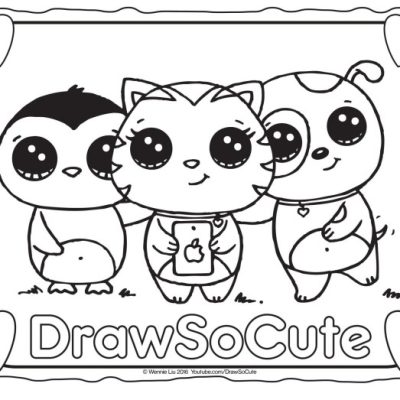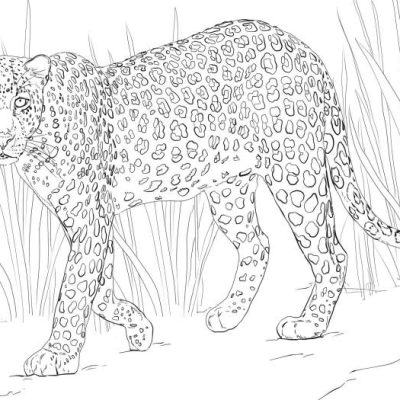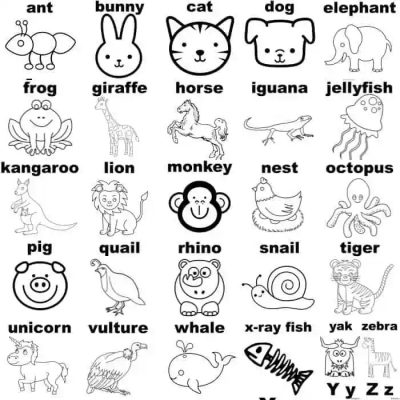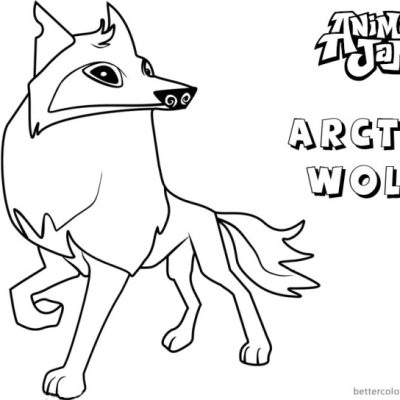Tropical Animals Coloring Pages A Colorful Exploration

Popularity and Trends of Tropical Animal Coloring Pages: Tropical Animals Coloring Pages
Tropical animals coloring pages – Tropical animal coloring pages enjoy widespread popularity, transcending age boundaries and appealing to a diverse audience. Their vibrant colors and exotic subjects offer a captivating creative outlet, contributing to their enduring appeal in the coloring book market. The trends within this niche reflect both enduring favorites and emerging interests.
Trending Tropical Animals in Coloring Pages
The popularity of specific tropical animals in coloring pages fluctuates, mirroring broader trends in popular culture and conservation awareness. Parrots, with their diverse plumage and playful personalities, consistently rank among the most sought-after subjects. Monkeys, particularly those with expressive faces and engaging postures, also maintain high demand. Toucans, recognizable by their oversized beaks, have experienced a surge in popularity, likely driven by their unique appearance and increasing visibility in media.
Other frequently featured animals include sloths, known for their slow and peaceful nature, and brightly colored frogs, appealing to those seeking intricate detail. These preferences are reflected in the abundance of coloring page designs featuring these animals.
Design Styles of Tropical Animal Coloring Pages
The visual styles employed in tropical animal coloring pages are incredibly diverse, catering to a wide range of preferences and skill levels. Realistic designs, aiming for anatomical accuracy and detailed rendering of fur, feathers, and scales, are favored by older children and adults seeking a more challenging coloring experience. Cartoonish designs, characterized by simplified features and exaggerated expressions, appeal to younger children and those preferring a less demanding approach.
Simple designs, featuring bold Artikels and minimal detail, are perfect for beginners or those looking for a quick and relaxing activity. The availability of these diverse styles ensures that there’s a coloring page to suit everyone’s taste and skill level.
Vibrant tropical animals coloring pages often depict parrots with their jewel-toned plumage or poison dart frogs in dazzling hues. These vivid colors, however, aren’t always what they seem; some animals utilize camouflage or mimicry, as detailed in this fascinating article on animals with false coloring. Understanding these deceptive displays adds another layer of intrigue to the already captivating world of tropical animals, making those coloring pages even more enriching.
Popularity and Design Across Age Groups
| Animal | Popularity Trend | Design Style | Target Age Group |
|---|---|---|---|
| Parrots | Consistently High | Realistic, Cartoonish, Simple | All ages |
| Monkeys | High | Realistic, Cartoonish | Children, Adults |
| Toucans | Rising | Cartoonish, Simple | Children, Young Adults |
| Sloths | Steady | Realistic, Simple | Adults, Teenagers |
| Frogs | Moderate | Realistic, Detailed | Older Children, Adults |
Design Elements and Artistic Styles
Tropical animal coloring pages aren’t just about filling in spaces; they’re a vibrant journey into lush landscapes and exotic creatures. The design elements and artistic styles employed significantly impact the overall appeal and engagement of these pages, making them captivating for both children and adults. A well-designed coloring page successfully blends aesthetic appeal with creative freedom, allowing the colorist to personalize their artistic expression.The visual impact of a tropical animal coloring page hinges on several key elements.
The use of vibrant, saturated colors is paramount, mirroring the vivid hues found in tropical environments. Lush backgrounds, often depicting dense jungles, sunny beaches, or coral reefs, provide a rich context for the animals. Intricate details in the animal’s fur, feathers, or scales add complexity and visual interest, encouraging careful observation and detailed coloring. The style of the line art itself – thick, thin, detailed, or simplified – contributes to the overall feel and difficulty of the coloring page.
Artistic Styles in Tropical Animal Coloring Pages
Different artistic styles lend unique personalities to tropical animal coloring pages. Watercolor styles, for instance, evoke a sense of fluidity and softness, ideal for depicting the delicate features of butterflies or the smooth skin of a sloth. Pencil sketch styles, with their varied shading and texture, allow for the representation of depth and form, particularly effective in showcasing the textured hides of reptiles or the musculature of a monkey.
Line art, ranging from simple Artikels to intricate, detailed drawings, provides a versatile foundation, adaptable to various coloring techniques and skill levels. Bold, black Artikels often provide a clear framework for younger colorists, while more nuanced linework allows for a more sophisticated coloring experience.
- Watercolor Style Example: A toucan perched on a branch, with soft, blended colors used to depict its vibrant plumage and the surrounding foliage. The lines are delicate and slightly blurred, creating a dreamy atmosphere.
- Pencil Sketch Style Example: A detailed rendering of a jaguar, with varying shades of pencil used to create depth and texture in its fur. The background features a subtly shaded jungle scene, adding to the overall realism.
- Line Art Style Example: A simplified illustration of a parrot, with bold black Artikels and minimal internal detail. This style is easily colorable and suitable for younger children. The background is a simple, geometric pattern.
Sample Coloring Page Design: The Sloth
Imagine a sloth hanging from a mango tree branch. The artistic style is a blend of watercolor and line art. The sloth itself is rendered in a detailed line art style, showcasing its long claws and thick fur. However, the lines are not overly bold; instead, they are thin and elegant, allowing for shading and color blending.
The watercolor style is applied to the background, depicting a vibrant sunset over a lush green canopy. The mango tree is rendered with a mix of line art for the branches and watercolor washes for the leaves and fruit, creating a sense of depth and texture. The overall color palette is warm and inviting, with shades of orange, yellow, and green dominating the scene.
The intricate details in the sloth’s fur and the lushness of the background provide a visually engaging experience for the colorist. The sloth’s expression is peaceful and serene, inviting a calming coloring experience.
Educational Value and Target Audience

Tropical animal coloring pages offer a surprisingly rich blend of entertainment and education, making them a valuable tool for both parents and educators. Beyond the simple pleasure of creativity, these pages provide opportunities for learning and development across various cognitive and motor skills. Their appeal spans a wide age range, catering to the specific needs and developmental stages of different children.Coloring pages featuring vibrant tropical animals like parrots, monkeys, and sloths engage children in a fun and accessible way, fostering a love for nature and encouraging curiosity about the natural world.
The act of coloring itself is beneficial, contributing to improved fine motor skills, hand-eye coordination, and focus. The process of choosing colors, staying within the lines, and carefully filling in spaces all contribute to these crucial developmental milestones.
Educational Benefits for Children
The educational benefits extend beyond motor skill development. Tropical animal coloring pages can be incorporated into lessons on geography, zoology, and environmental science. For instance, a coloring page featuring a toucan could spark a discussion about its habitat in the Amazon rainforest, leading to broader conversations about rainforest ecosystems and the importance of conservation. Similarly, a coloring page featuring a brightly colored frog might introduce children to the concept of camouflage and adaptation in the wild.
Teachers can use these pages as springboards for interactive learning activities, encouraging children to research the animals they are coloring and present their findings to the class.
Target Audience and Age-Appropriate Designs
The primary target audience for tropical animal coloring pages is broad, ranging from preschoolers to elementary school children and even adults who enjoy creative pursuits. However, the complexity and design of the coloring pages should be tailored to the specific age group.Preschool coloring pages typically feature simple Artikels of animals with large, easily colored areas. For example, a preschool-aged child might color a page featuring a simplified Artikel of a brightly colored macaw, focusing on large blocks of color.
These pages help develop basic motor skills and color recognition. In contrast, elementary school-aged children benefit from more intricate designs with finer details. A coloring page for this age group might include a more realistic depiction of a monkey swinging through trees, requiring more precision and control in coloring. The increased complexity challenges their fine motor skills and encourages attention to detail.
Adult coloring pages often incorporate intricate patterns and detailed designs, providing a more challenging and relaxing creative outlet. An adult coloring page might feature a highly detailed illustration of a tropical rainforest scene teeming with various animals, plants, and insects, demanding a high level of focus and patience.
Examples of Educational Application
Coloring pages can be integrated into various educational settings to enhance learning. For instance, a teacher could assign a coloring page as a reward for completing a task or as a calming activity during a busy day. They can also be used to reinforce learning about specific animals or habitats. After coloring a page featuring various tropical animals, children can be asked to write a short story about their adventures.
Furthermore, coloring pages can be used to promote creativity and self-expression, allowing children to add their own personal touches and interpretations to the images. This encourages imaginative thinking and develops artistic skills. Teachers can use the completed coloring pages to create classroom displays, further engaging children in the learning process.
Illustrative Examples of Tropical Animals

Tropical animals are incredibly diverse and visually striking, making them perfect subjects for coloring pages. Their vibrant colors, unique patterns, and interesting postures offer endless creative opportunities for both children and adults. Let’s delve into the world of five popular tropical animals frequently featured in these creative activities.
Sloths
Sloths are arboreal mammals known for their incredibly slow movements. They inhabit the rainforests of Central and South America. Their physical characteristics include long limbs, large claws perfect for gripping branches, and dense fur often covered in algae, giving them a greenish hue. In coloring pages, sloths are typically depicted hanging upside down from branches, their fur a muted green or brown, sometimes with subtle variations in shading to indicate depth and texture.
Their large, expressive eyes are usually prominent features.
Macaws
Macaws are large, colorful parrots found in Central and South America. Known for their vibrant plumage, macaws boast a range of colors including reds, blues, yellows, and greens. Their powerful beaks are crucial for cracking nuts and seeds, a key part of their diet. Coloring pages featuring macaws often showcase the birds’ bright, contrasting colors, with intricate details in their feather patterns.
They are frequently shown perched on branches or in flight, their wings outstretched, displaying the full spectrum of their colorful feathers.
Jaguars
Jaguars are the largest cat species in the Americas, inhabiting diverse habitats from rainforests to grasslands. Their powerful bodies are covered in a tawny coat, adorned with distinctive black rosettes. Their muscular build and powerful jaws are adapted for hunting a wide variety of prey. In coloring pages, jaguars are often depicted in a crouched hunting posture, their rosettes clearly defined, with variations in shading to highlight their muscular structure.
Their intense gaze is usually a key element of the illustration.
Monkeys, Tropical animals coloring pages
The term “monkey” encompasses a wide variety of primates found in tropical regions across the globe. Their physical characteristics vary greatly depending on the species, but many share features such as nimble hands and feet, and expressive faces. Their habitats range from rainforests to savannahs. Coloring pages featuring monkeys might depict different species, each with unique features. For example, a howler monkey might be shown with its distinctive facial markings and long tail, while a smaller monkey species might be depicted swinging from vines or playing amongst branches, their fur detailed with varying shades of brown or grey.
Flamingos
Flamingos are wading birds known for their striking pink or reddish plumage and long legs. They inhabit various tropical and subtropical regions, often living in large flocks. Their diet consists primarily of brine shrimp and algae, which contribute to their vibrant coloration. Coloring pages featuring flamingos typically emphasize their bright pink or reddish feathers, often with subtle gradients to show depth and texture.
They are often depicted standing in shallow water, with their long necks elegantly curved.










